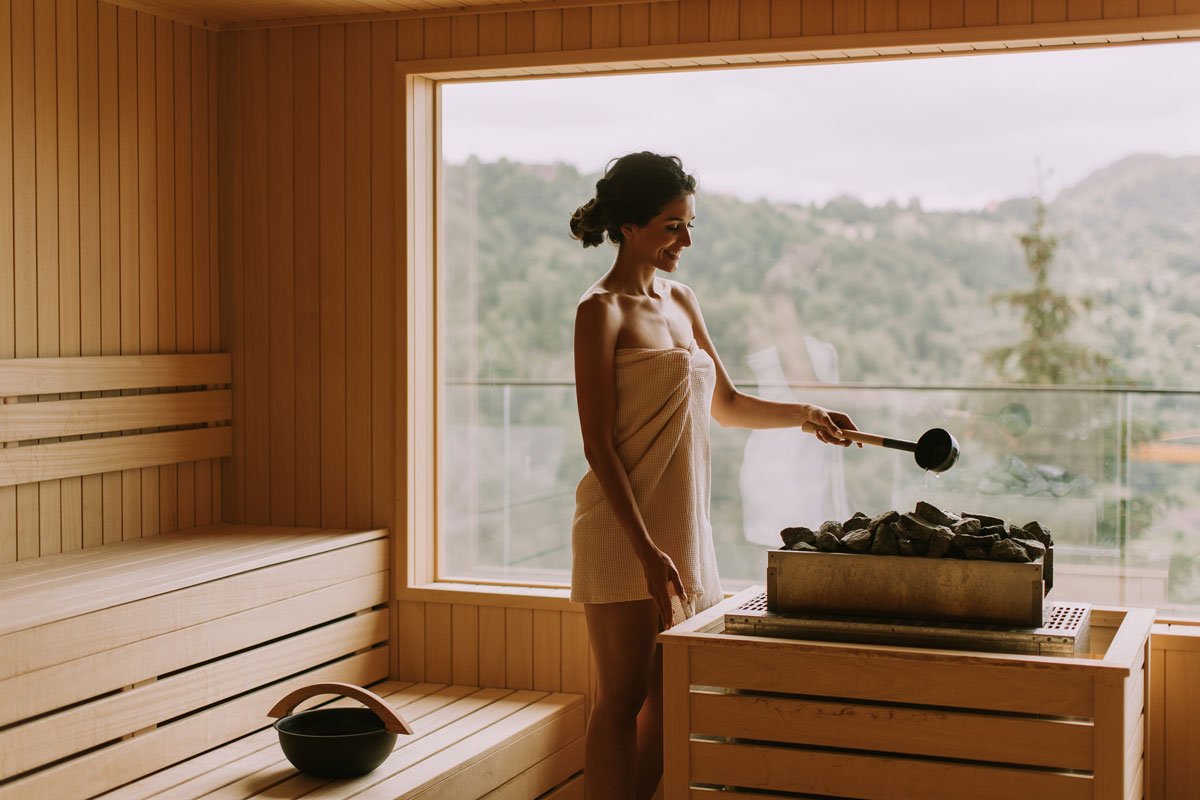
Whether you’re just getting started with indoor tanning or you’ve been using tanning beds for years, there are probably a few things you don’t know about tanning beds.
In this essential guide, we’re calling tanning beds 101, we’ll explain the nuts and bolts of tanning beds so you can learn more about tanning beds and get the glowing tan you’re after.
Tanning Beds 101
Read on to learn:
● How tanning beds work.
● Tanning bed benefits.
● Tanning bed risks.
● How to get the best tan possible.
Ready to get your tan on? Let’s get started.
How Tanning Beds Work
How do tanning beds work? It all comes down to the lamps they’re equipped with.
Tanning lamps are simply fluorescent bulbs that emit high amounts of artificial ultraviolet (UV) light, the same type of light emitted from the sun.
Most tanning lamps emit mostly UVA light and a small portion of UVB light. UVB light primarily affects the surface of the skin and is responsible for sunburns. On the other hand, UVA light penetrates deeper into the skin and generally does not cause sunburns or redness.
Tanning lamps fall into two major categories: Low-pressure and high-pressure.
● Low-pressure lamps emit a more balanced mix of UVA and UVB light.
● High-pressure emit almost exclusively UVA light.
Because of this, high-pressure lamps deliver a more intense tan in a shorter amount of time. In general, this makes high-pressure lamps too powerful for very light skin tones.
Because you can’t lay directly on the lamps, tanning beds are outfitted with acrylic sheets. They are also equipped with cooling fans, which help keep the temperature comfortable for the user.
Tanning Bed Benefits
It turns out that tanning beds offer an array of benefits other than a beautiful tan.
These are some of the benefits of tanning beds:
● Vitamin D: The UVB rays produced by tanning beds (particularly those with low-pressure lamps) trigger the body’s natural production of vitamin D. Vitamin D helps the body absorb calcium from food, which can support strong, healthy bones and teeth.
● Higher energy and a better mood: Several studies have found that UV exposure is linked to higher energy levels and improved moods. One 2018 articled titled “Effect of ultraviolet light on mood, depressive disorders and well-being,” published in the journal Photodermatology, Photoimmunology and Photomedicine noted that out of seven studies, six found that UV exposure had a positive effect on participants’ moods.
● Better skin: According to an article published in the journal Dermatologic Therapy, “A Review of the Use of Tanning Beds as a Dermatological Treatment,” tanning beds — especially those with low-pressure, higher-UVB lamps — can help to treat a variety of skin conditions. These include psoriasis, eczema and acne.
In a nutshell: if used responsibly, tanning bed use may be able to help you produce more vitamin D, enjoy an improved mood and clear up any superficial skin conditions.
Tanning Bed Risks
While tanning beds have several powerful benefits, they also come with their own set of risks.
Here are some of the risks that tanning beds can pose, according to an article from the American Academy of Dermatology titled “10 surprising facts about indoor tanning:”
● Premature aging: UV exposure, whether from tanning beds or the sun, can lead to wrinkles, age spots and a reduction in skin firmness.
● Increased risk of skin cancer: Both tans and sunburns are a symptom of UV-induced damage. This damage can eventually lead to the development of skin cancer, especially if you have a family history of skin cancer.
● Injuries from overexposure: If you use a tanning bed for too long, you could experience burns, heat exhaustion and rashes.
Because of those risks, it’s essential to always use tanning beds in moderation.
By spacing out your tanning sessions as much as possible, only using your tanning bed for the recommended amount of time and refraining from tanning if you have a family history of skin cancer, you can reduce your risk of premature aging, skin cancer or injury.
To learn more about tanning bed safety, take a look at our previous article on the topic here.
How to Get the Best Tan Possible
So far we’ve talked about how tanning beds work and discussed their benefits and risks. Now, you’re ready to find out how you can get the bronzed glow you want.
Here are our top tips for getting a great tan in your home tanning bed:
● Prepare properly: Before you tan, be sure to exfoliate your skin in the shower or bath and then moisturize with an oil-free lotion. You might also want to put on an indoor tanning lotion before you start your tanning session.
● Know your skin type: For indoor tanning purposes, there are six skin types, with type one being the lightest and type six being the darkest. People with type one skin should generally only use low-pressure lamps for just a couple of minutes at a time, while people with type six skin can usually use high-pressure lamps for longer periods of time. As a general rule of thumb, your first tanning sessions should be no longer than six minutes, or fewer if you have very fair skin.
● Use eye protection: Proper eye protection is absolutely crucial, as a lack of adequate protection can cause serious damage to your eyes. Luckily, there’s an easy fix: a variety of tanning goggles are available from online retailers for less than $5. Just remember, regular sunglasses or other types of DIY protection are inadequate.
● Extend your tan between sessions: Using a specialized tan extender or sunless self-tanner can help your tan last longer, meaning you can go for longer periods without tanning. This isn’t just convenient, it also serves to protect your skin from unnecessary UV damage.
Want to learn even more about tanning beds? Check out our library of educational tanning bed articles:
● A Beginner’s Guide to Tanning Beds
● The Unconventional Guide to Tanning Beds
● History of the Tanning Bed in Under 10 Minutes
● The Future of Tanning Beds
Or, if you’re ready to start tanning ASAP, start by browsing this large selection of home tanning beds.









